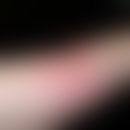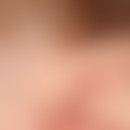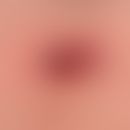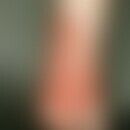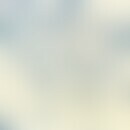Synonym(s)
HistoryThis section has been translated automatically.
DefinitionThis section has been translated automatically.
You might also be interested in
EtiopathogenesisThis section has been translated automatically.
Mutation of the RECQL4 gene, located at gene locus 8q24.3, with consecutive disruption of the DNA helicase RECQL4.
ManifestationThis section has been translated automatically.
LocalizationThis section has been translated automatically.
ClinicThis section has been translated automatically.
In atrophic skin, streaky or reticular erythema with telangiectasias and hypopigmentation are seen.
Associated symptoms: Juvenile cataracts, genital hypo- or aplasia, small hands and feet, plump fingers and toes. Hypo- or aplasia of sweat and sebaceous glands.
Frequent occurrence of neoplasms of the skin (e.g. spinocellular carcinoma) and skeleton (e.g. osteosarcoma).
TherapyThis section has been translated automatically.
Laser: Laser treatment (argon, pulsed dye laser) leads to cosmetic improvements in facial telangiectasia.
Dermabrasio: Only moderate success is achieved by grinding the skin.
General therapyThis section has been translated automatically.
Bland skin care e.g. with Asche Basis Creme, Linola Creme, Eucerin cum aq., if necessary with urea-containing preparations (e.g. Linola Urea Creme, Nubral Creme, Basodexan Creme, Excipial U Lipolotio).
Light protection: Textile or chemical/physical light protection with potent sunscreens (SPF > 30, e.g. Anthelios, Contralum ultra), as sun exposure is likely to increase the skin changes in the long term.
Note(s)This section has been translated automatically.
The distinction between Rothmund syndrome, Thomson syndrome and Rothmund-Thomson syndrome is no longer common today. In this respect, the name Rothmund-Thomson syndrome prevails. This syndrome, as well as Baller-Gerold syndrome, and RAPADILINO syndrome are associated with mutations in the RECQL4 gene. Because of the multiple overlapping signs and symptoms of these syndromes, it is believed to be a single syndrome with distinct phenotypes and overlapping symptoms.
LiteratureThis section has been translated automatically.
- Bruce H et al (2009) Cutaneous manifestations of internal malignancy. Cancer J Clin 59: 73-98
- Judge MR et al (1993) Rothmund-Thomson syndrome and osteosarcoma. Br J Dermatol 129: 723-725
- Piquero-Casals J et al (2002) Rothmund-thomson syndrome in three siblings and development of cutaneous squamous cell carcinoma. Pediatric dermatol 19: 312-316
- Rothmund A (1868) On Cataracte in connection with a natural skin degeneration. Graefes Arch Klin Exp Ophthal 14: 159-182
- Schrallhammer K et al (1988) Congenital poikiloderma with warty hyperkeratoses. Dermatologist 39: 143-148
- Vennos Em et al (1992) Rothmund-Thomson syndrome: Review of the world literature. J Am Acad Dermatol 27: 750-762
- Wang LL et al (2003) Association between osteosarcoma and deleterious mutations in the RECQL4 gene in Rothmund-Thomson syndrome. J Natl Cancer Inst 95: 669-674
Incoming links (9)
Berlin syndrome; De sanctis-cacchione syndrome; Elastosis perforans serpiginosa; Goltz syndrome; Poikilodermia vascularis atrophicans; Premature canities; Rothmund-thomson syndrome; Teleangiectasia; Teleangiectasia;Outgoing links (12)
Baller-Gerold syndrome; Cataract; Dermabrasion; Hypopigmentation; Laser; Light protection; Light stabilizers; Poikiloderma (overview); Rapadilino syndrome; RECQL4 Gene; ... Show allDisclaimer
Please ask your physician for a reliable diagnosis. This website is only meant as a reference.
